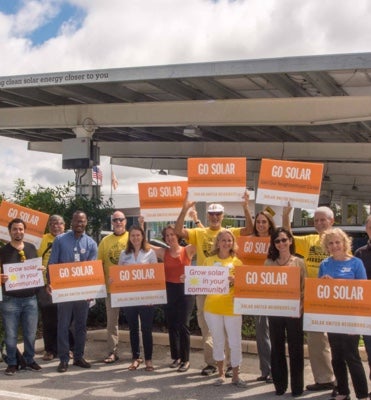What To Consider When Shopping For Community Solar
HOW TO SHOP FOR IT:
Want Community Solar? Here’s What to Look For
Because community solar varies by state and even by utility, it’s important to know what to look for to make sure you get the deal that’s best for you.
Read the community solar project terms carefully to determine its rules and structure. Understand how much you’ll pay for the energy and whether your cost will go up over time.
This page provides you with some important information to help you shop wisely. Start here to be your own best advocate!

Example Subscription Types
When you subscribe to a community solar project, you’ll sign a contract with the provider. Contracts should disclose information such as contract price, term length, additional charges, renewal, dispute resolution, insurance, and system maintenance.
The contract may be short-term and easily cancelled, but it might not be. It might be a long-term contract like a mortgage or car loan. So, it’s important to review the agreement carefully before signing it. Check the terms you’re being offered and ask questions! Make sure you understand what’s in your agreement.
Below are three common types of community solar subscriptions. Consider what may work best for you:
Fixed rate (kWh)
Escalating rate (kWh)
Percentage discount (kWh)
What to Know Before Subscribing

Ask for and review the subscriber agreement. There, you’ll see details about the cost of the subscription, the length of the contract, termination fees, and more. Read it carefully and ask questions before signing.
Questions to ask when choosing community solar:
- How much will I pay per kilowatt-hour?
- How does that compare to what I would’ve paid to my utility?
- How long is the contract?
- Will my savings be the same every month?
- When will I start seeing credits on my utility bill?
- When will I start getting billed by the subscription provider (if different from the utility)?
- What happens if I move, inside or outside of the utility area?
- Are there late fees and cancellation fees?
- How many kilowatt-hours will my subscription provide yearly?
Time Between Subscription and Savings
Developers have to get a certain number of subscribers before they can hire a solar company to build a new community solar project. In these cases, it can take three to six months from the time you subscribe to see savings in your overall utility expenses. In these cases, get as much information as possible about the solar company building the project. It is also vital to learn the project build completion estimate provided by the solar company to know when you will begin to see the return on your investment.
For projects already in operation, check with your provider on when you can expect to start seeing savings on your electric bills.
PART 3
Next Section

WHERE TO FIND COMMUNITY SOLAR?
View a list of community solar projects available in your area —and sign up!
